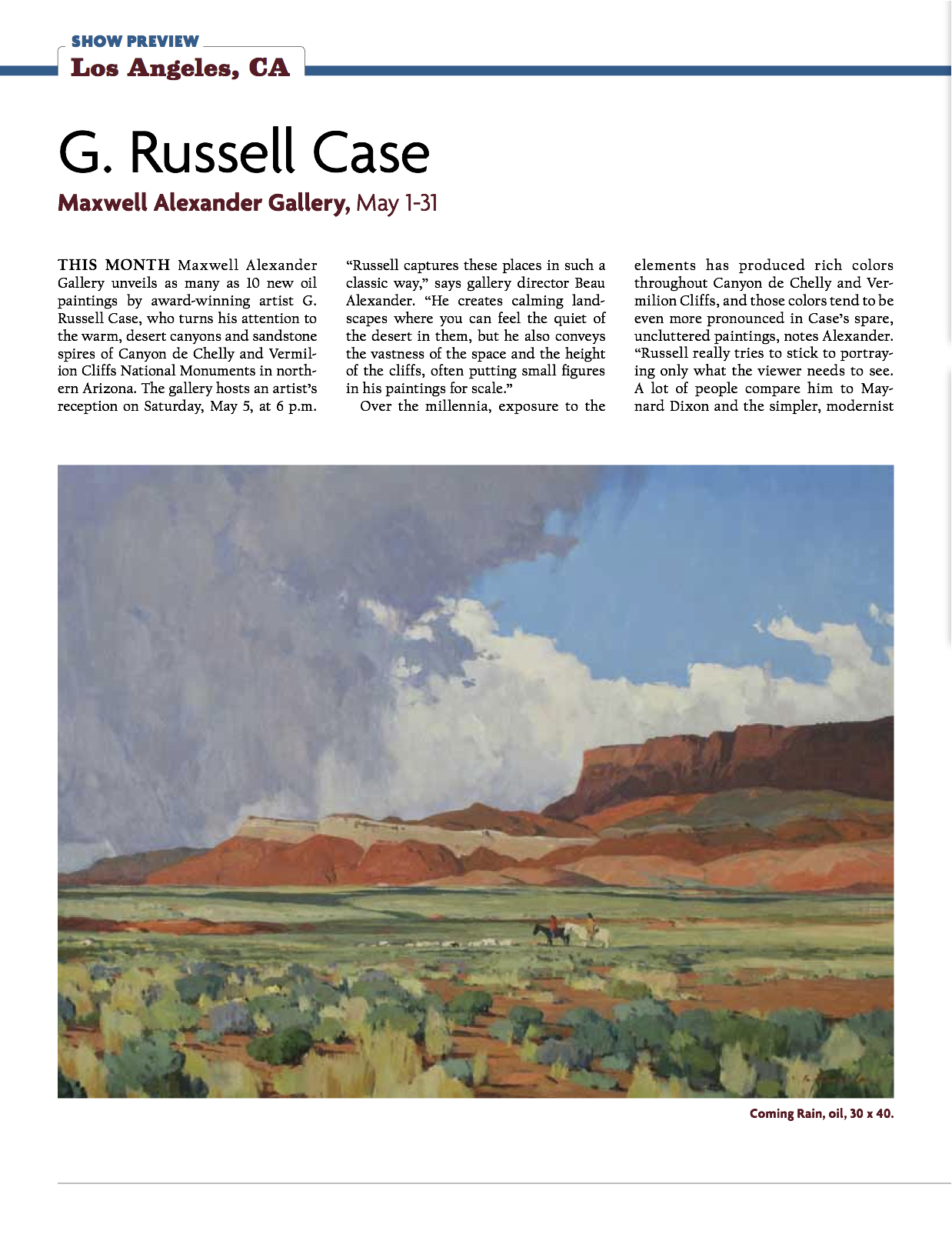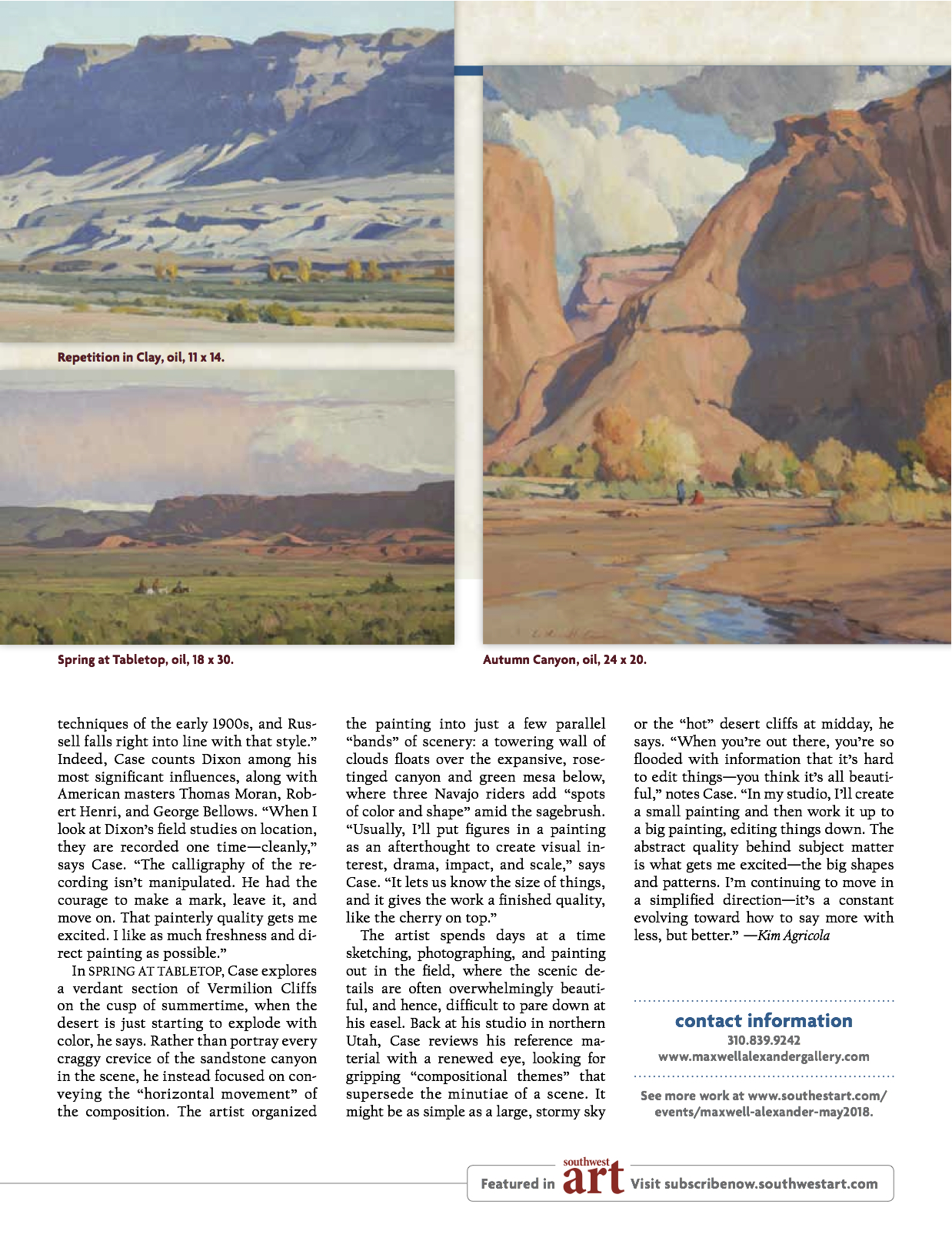This month Maxwell Alexander Gallery unveils as many as 10 new oil paintings by award-winning artist G. Russell Case, who turns his attention to the warm, desert canyons and sandstone spires of Canyon de Chelly and Vermilion Cliffs National Monuments in northern Arizona. The gallery hosts an artist’s reception on Saturday, May 5, at 6 p.m.
“Russell captures these places in such a classic way,” says gallery director Beau Alexander. “He creates calming landscapes where you can feel the quiet of the desert in them, but he also conveys the vastness of the space and the height of the cliffs, often putting small figures in his paintings for scale.”
Over the millennia, exposure to the elements has produced rich colors throughout Canyon de Chelly and Vermilion Cliffs, and those colors tend to be even more pronounced in Case’s spare, uncluttered paintings, notes Alexander. “Russell really tries to stick to portraying only what the viewer needs to see. A lot of people compare him to Maynard Dixon and the simpler, modernist techniques of the early 1900s, and Russell falls right into line with that style.” Indeed, Case counts Dixon among his most significant influences, along with American masters Thomas Moran, Robert Henri, and George Bellows. “When I look at Dixon’s field studies on location, they are recorded one time—cleanly,” says Case. “The calligraphy of the recording isn’t manipulated. He had the courage to make a mark, leave it, and move on. That painterly quality gets me excited. I like as much freshness and direct painting as possible.”
In Spring at Tabletop, Case explores a verdant section of Vermilion Cliffs on the cusp of summertime, when the desert is just starting to explode with color, he says. Rather than portray every craggy crevice of the sandstone canyon in the scene, he instead focused on conveying the “horizontal movement” of the composition. The artist organized the painting into just a few parallel “bands” of scenery: a towering wall of clouds floats over the expansive, rose- tinged canyon and green mesa below, where three Navajo riders add “spots of color and shape” amid the sagebrush. “Usually, I’ll put figures in a painting as an afterthought to create visual interest, drama, impact, and scale,” says Case. “It lets us know the size of things, and it gives the work a finished quality, like the cherry on top.”
The artist spends days at a time sketching, photographing, and painting out in the field, where the scenic details are often overwhelmingly beautiful, and hence, difficult to pare down at his easel. Back at his studio in northern Utah, Case reviews his reference material with a renewed eye, looking for gripping “compositional themes” that supersede the minutiae of a scene. It might be as simple as a large, stormy sky or the “hot” desert cliffs at midday, he says. “When you’re out there, you’re so flooded with information that it’s hard to edit things—you think it’s all beautiful,” notes Case. “In my studio, I’ll create a small painting and then work it up to a big painting, editing things down. The abstract quality behind subject matter is what gets me excited—the big shapes and patterns. I’m continuing to move in a simplified direction—it’s a constant evolving toward how to say more with less, but better.” —Kim Agricola
For more work by G. Russell Case, click here.


